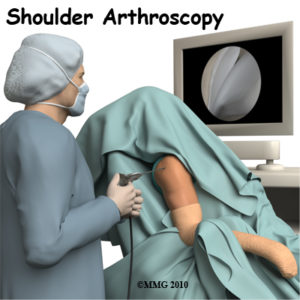Our Blog
Home  Blog
Blog
 Blog
Blog
 Blog
Blog
Frozen shoulder, also called adhesive capsulitis, is a painful condition in which the movement of the shoulder becomes restricted. Frozen shoulder occurs when the ligaments surrounding The shoulder joint swell and get stiff and result in restricting the mobility. Usually, people are diagnosed with the problem in only one of their shoulders, but sometimes it may affect the ligaments in both shoulders.
Frozen shoulder occurs when the strong tissue surrounding the shoulder (called The shoulder joint capsule) become thick, stiff, and inflamed. The condition is called ‘frozen’ shoulder because the more pain that is felt, the less likely the shoulder will be used. Lack of use causes the shoulder capsule to thicken and becomes tight, making the shoulder even more difficult to move — it’s ‘frozen’ in its position.
Symptoms of frozen shoulder are divided into three stages:
1. The ‘freezing’ stage:
The shoulder becomes stiff and is painful to move. The pain slowly increases. It may worsen at night. Inability to move the shoulder increases. This stage lasts 6 weeks to 9 months.
2. The ‘frozen’ stage:
In this stage, pain may lessen, but the shoulder remains stiff. This makes it more difficult to complete daily tasks and activities. This stage lasts 2 to 6 months.
3. The ‘thawing’ (recovery) stage:
In this stage, pain lessens, and ability to move the shoulder slowly improves. Full or near full recovery occurs as normal strength and motion return. The stage lasts 6 months to 2 years.
To diagnose frozen shoulder, your doctor will:
The aim of treatment for frozen shoulder is to alleviate pain and preserve mobility and flexibility in the shoulder. However, recovery may be slow, as symptoms tend to persist for several years. If the problem persists, therapy and surgery may be needed to regain motion if it doesn’t return on its own.
Some simple treatments include:


Injection

Surgery
These two procedures are often used together to get better results.
Simple treatments, such as use of pain relievers and shoulder exercises, in combination with a cortisone injection, are often enough to restore motion and function within a year or less. Even left completely untreated, range of motion and use of the shoulder continue to get better on their own, but often over a slower course of time. Full or nearly full recovery is seen after about 2 years.
Frozen shoulder home exercises
This website uses cookies: By continuing to browse this site you accept this policy.
6 comments. Leave new
This is really very informative article written in simple language and very much helpful..
This is really very much informative article written in simple language and is very much helpful..
Glad that u appreciated…..Share it if u like……
Thanks….
I am very delighted to see information being put up in a patient friendly laguage.The format of the article is also Q-A type which can straight away appeal a layman.
Great job and keep up the good work Dr.Krunal.
Thanks….You are right…It has to be patient friendly…..People need to be educated about this day to day problems…